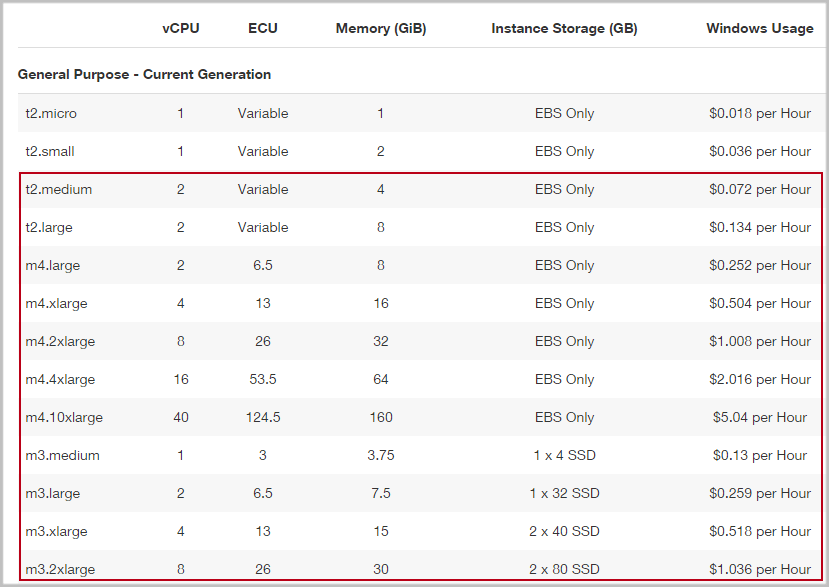What is the Cost for a System that Delivers 10 Million Emails per Month?
A simple comparison to help you make the right choice.
Anyone who has a big email subscriber list knows that it’s not cheap to send out a lot of emails. The more your list grows, the more expensive it is to email to it. It’s a real challenge for large senders to find the right email system that would let them send lots of emails at a reasonable price.
From regular desktop email software to cloud-based email service providers, there are dozens of alternatives out there that promise that they’ll help you deliver the desired amount of mail.
Let’s say you run a decent email marketing list of 10,000,000 subscribers. How much would you pay for sending 10,000,000 emails per month with different providers and software? We want to make your decision as easy as possible, so we’ve put together some info that will help you decide which option is best for you.
Below is a quick comparison of prices charged by email service providers (ESP) vs. hybrid email systems.
We hope this helps…
First of all, what is a hybrid email system? A hybrid email system installs onto your desktop or cloud server and works as a front-end to any SMTP relay or delivery service. In other words, it provides you the interface where you enter your SMTP settings, manage email message and contact lists, autoresponders and bounces etc. etc. A hybrid email system is not supplied with an SMTP server, but it can work with any SMTP server or SMTP settings of any delivery service such as Mandrill, MailGun, SendGrid, SMTP.com, Amazon SES and others.
Let’s consider different scenarios and estimate the prices for sending 10 million emails.
Scenario #1. Using Hybrid Email System EasyMail7 with an SMTP Relay.
The main advantage of hybrid software in comparison with ESPs is the affordable price. For EasyMail7, you pay $259 for the first year and an optional renewal fee each year.
But to send 10 million emails per month, you’ll need a professional and powerful SMTP relay like PowerMTA. PowerMTA doesn’t disclose their prices, but you can contact them and get a quote for the desired number of emails.
Total investment:
$259 one time for EasyMail7 + SMTP relay maintenance fee (varies depending on the SMTP relay used).
Scenario #2. Using Hybrid Email System EasyMail7 with a Delivery Service.
The most affordable delivery service is Amazon SES. Their rate is $1 per 10,000 messages wich makes $1000 for 10 million emails. Plus, their charge a fee for data transfer and attachments you send ($0.12 per GB of attachments sent). See the Amazon SES pricing for data transfer here.
Total investment:
$259 one time for EasyMail7 + $1000/month for Amazon SES (and optionally data transfer fee).
In the scenarios #1 and #2 where you install EasyMail7 on a local computer or server, you must have a powerful system with an SSD disk to be able to send a large volume of email messages.
If you want to benefit from a higher sending speed, get the ability to use online subscription forms to collect email leads in real time, and handle the unsubscribe proces online, consider the scenario #3.
Scenario #3. Using Hybrid Email System EasyMail7 with Amazon SES on Amazon EC2 Instance.
If you launch an Amazon EC2 instance and use the EasyMail7 on the EC2 instance, the sending speed increases considerably since all data is located within the same datacenter on Amazon.
Amazon provides multiple EC2 instances with different capacity and resources. For sending 10 million emails per month, we recommend choosing an instance starting from t2.medium for $0.072 per hour (which makes $54 per month approximately). You can see all Amazon EC2 instances and prices here. Again, a powerful SSD disk and high network resources are recommended for the instance.

And as we’ve already mentioned, using Amazon SES delivery service costs $1,000 for 10 million emails.
Total investment:
$259 one time for EasyMail7 + $1,000/month for Amazon SES (and optionally data transfer fee) + $54+/month for EC2.
Scenario #4. Using Email Service Provider.
Email service providers like Mailchimp, Aweber, ConstantContact and others are good in terms of usability and simplicity. You don’t have to have any special knowledge about SMTP and delivery. With an email service provider, you simply upload your subscriber list, create a message and hit “Send”.
All the concomitant things like unsubscribe and bounce handling, email analytics and tracking are handled by the ESP. With that said, an email service provider is a good choice for startups with a small email list.
On the other hand, email service providers are far more expensive and can charge your fortune for sending large volumes of emails.
Here is what you’re paying for 10 million emails with Mailchimp:

Aweber, GetResponse and ConstantContact require to contact them for a quote for 10 million emails, but it’s possible to assume that their price will not differ much from the Mailchimp’s price.
Well, $3,600/month vs. $1,313/month makes a difference, doesn’t it?
As you see, hybrid email software even used with a 3rd party delivery service beats email service providers in price, but it does require manual configuration and some knowledge to set up the bounce handling and unsubscribe handling process. EasyMail7 have a great deal of intelligence built-in, such as bounce handling, feedback loop analysis and automatic suppression lists which can protect your reputation by preventing redelivery to failed or complaining addresses.
When you use a hybrid email system, your reputation and delivery are under your full control. You are the only person who is responsible for what you are sending and how.
We hope this comparison guide will be useful to you in your decision about the right email marketing system.

Ready to Give EasyMail a Try?
Turn any email provider into a growth marketing platform.
Don’t put your profits in the hands of a third party, be in control of your email — OWN YOUR DATA, OWN YOUR AUTORESPONDERS, CONTROL YOUR INBOX DELIVERY, REPUTATION, DELIVERY SPEED and manage delivery inhouse or outsource to multiple providers.















Get into more inboxes
Test email delivery with several ESPs, route the emails by ISP and optimize deliverability
Reduce costs
Send Emails via Amazon SES or In-House SMTPs.
Optimize ROI
Optimize your email operation by cutting costs and increasing customer engagement.
System requirements: Windows® 7, 8, 10 Windows® Server 2008 or higher
Popular Articles
Tags: email marketing





